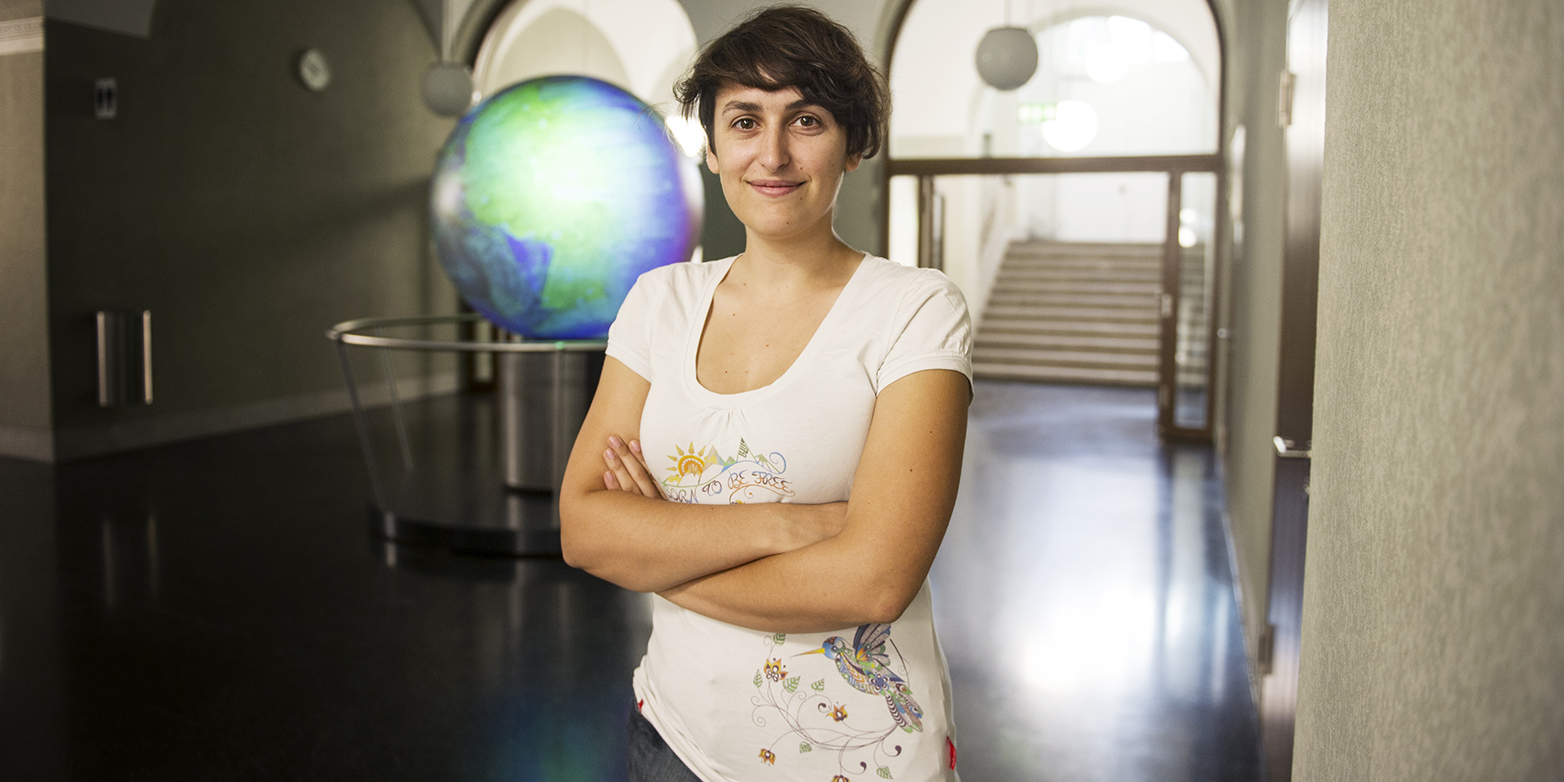Computing Earth’s motions
ETH Fellow Marie Bocher develops at the Institute of Geophysics computer models of seismic cycles. The 30-year old scientist hopes this will help to improve earthquakes risk assessment.

Marie Bocher develops equations to understand what literally moves the Earth: the geodynamicist is working on improving our understanding of how earthquakes occur. Her research focuses on the interplay between what happens within the Earth and the dynamics we observe at its surface.
“The Earth’s surface is divided into tectonic plates that are in constant motion of a few centimetres per year. Each plate has its own speed and direction of motion, so the contact between neighbouring plates are zones of intense deformation,” explains the young scientist, who joined the Institute of Geophysics last year as an ETH Fellow.
”At these plate boundaries, the stress generally builds up over time, until the rock yields and in some cases the deformation is rapid enough to release seismic waves.” When these waves reach the surface with sufficient energy, we experience them as earthquakes, says Bocher.
Combining physical models and observations
But why do tectonic plates move in the first place? What is the motion of rocks within the Earth’s mantle? And how to combine what we know of the physics of the Earth’s mantle and crust with geological observations in a way that improves our understanding of the dynamics of the solid Earth as well as the seismic cycles? These are the questions that the French scientist wants to find answers to. “My job is to develop a way to capture all of these sources of information in a single model,” she says, when describing her research. She hopes this will lead to a more reliable assessment of earthquake risk in the future.
To this end, the scientist spends her time developing computer programmes that combine seismic and geological data with a physical model. “Currently, I spend most of my days programming,” she says.
When asked about her life path, it becomes clear just how important research is to the geodynamicist. Her parents have actively supported her since childhood. Her mother is a child minder, and father a radiology assistant. “My parents would have liked to go to university but did not have the chance to do so. They always encouraged me and my older siblings to learn as much as we could, to be dedicated to our studies, and ultimately, to get a higher education degree.”
Today, her brother works as a financial analyst, while her sister teaches maths. “I remember watching my sister, who is 9 years older than me, studying mathematics and writing all these mysterious symbols. It surely contributed to develop in me a fascination for mathematics and science in general from an early age.” Her sister was and still is a strong role model for Marie Bocher.
Finding her way: computational geodynamics
After graduating from high school in 2006 (Baccalauréat), Bocher spent the next three years in a preparatory school in Paris, where she studied biology, physics, chemistry, earth sciences and maths. She then obtained a scholarship to continue her studies at the prestigious École Normale Supérieure de Lyon (ENS de Lyon) and completed her bachelor’s and master’s degrees there.
“Initially I wanted to work as a field geologist, but I gradually shifted my focus to numerical modelling of the dynamics of the solid Earth, especially thanks to one of my teachers, Professor Nicolas Coltice, who later became my co-advisor for my doctoral thesis”. He also set up a contact with the University of Sydney, where she spent a year as a research assistant, modelling the dynamics of metamorphic core complexes – rocky masses within the Earth’s crust. She then returned to the ENS for her second year of master and doctoral thesis on mantle circulation and its link with surface tectonics, which she completed successfully in 2016. In October 2017 she came to ETH Zurich, where she had already worked for a few months in 2011 on modelling of three-phase magma.
Love of the outdoors
When she is not working, Bocher loves climbing mountains. Having grown up in a small seaside town in Brittany, the scientist has spent the last few years discovering the Alps. Hiking, climbing, ski touring – she loves being outdoors, especially in the mountains. She and her partner are currently converting a VW bus into a camping van. They plan to use it for weekend trips away – immersing themselves in nature.
Currently working as an ETH Fellow in the Seismology and Wave Physics Group at the Institute of Geophysics, she has funding to pursue her research up to autumn 2019.
Making a stance against sexism
Marie Bocher is not only interested in research, but also in social issues: she is co-founder of the blog “external pageDid this really happen?call_made”, which campaigns for more gender equality in science. “People often don’t realise that their behaviour is sexist or discriminatory.” Bocher wants to bring awareness on everyday sexism in academia and to contribute to the change in mentalities, using this blog.
She’s not entirely certain how her career will develop over the next few years. “As a scientist in the highly competitive environment that academic research currently is, you learn not to worry too much about tomorrow and to plan from one research project to the next.” One thing Bocher is sure about, however, is that she loves her work and will keep on doing it as long as it remains so.
